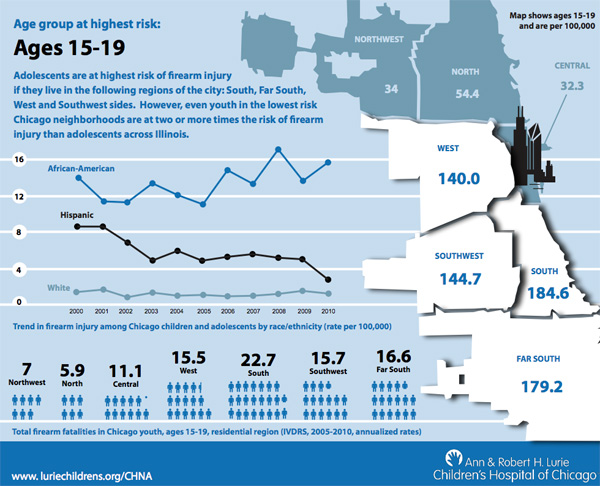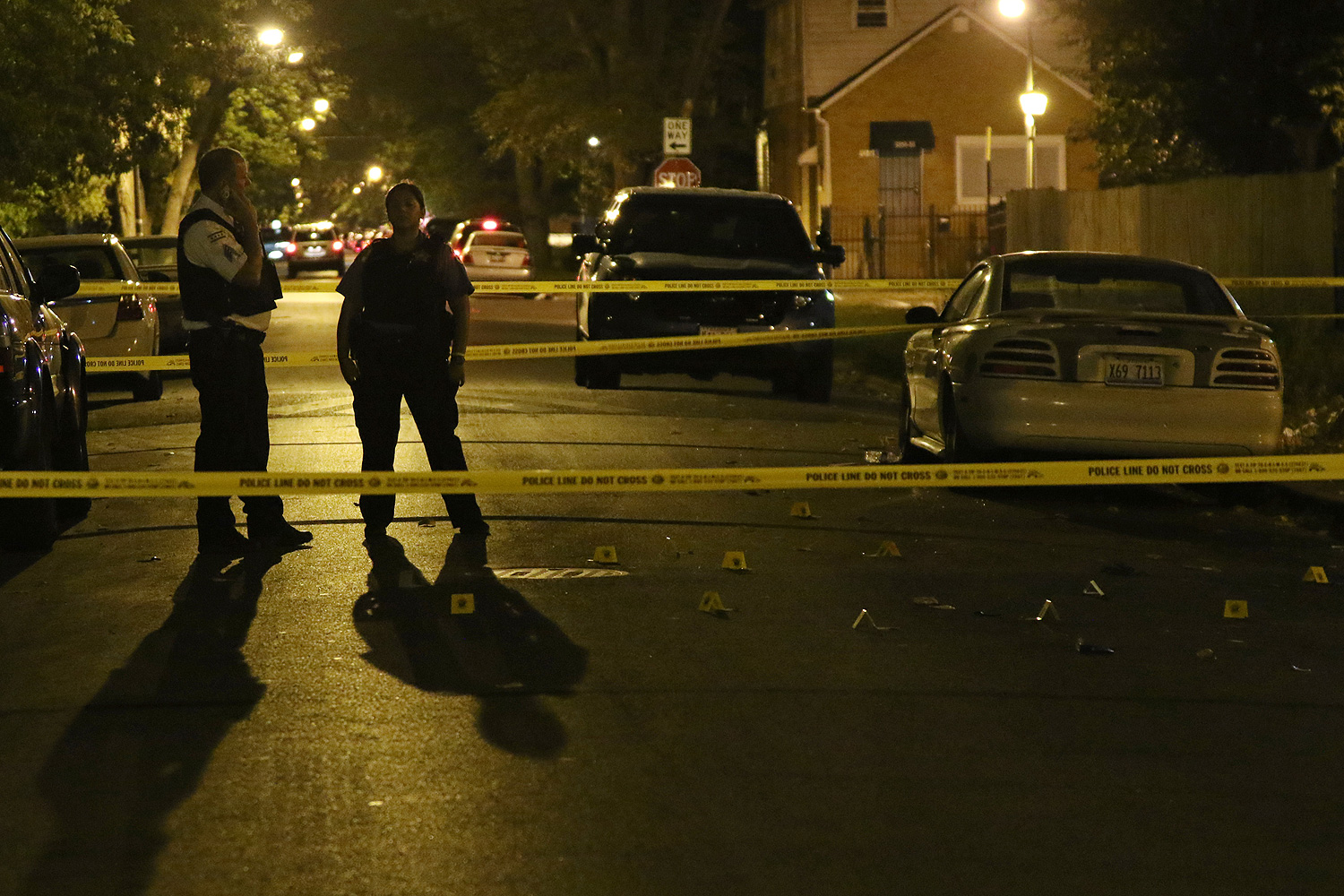In 2013, Lurie Children's Hospital conducted a survey of how children and adolescents had been injured or killed throughout the city over the prior decade. Some of the patterns exhibit familiar trends and geographies, but within those patterns are some interesting details. For instance, what are usually the headlining numbers, firearm injuries and deaths.

Those are very high numbers—the rates of firearm injury on the south and west sides for 15 to 19-year-olds are higher than the rates of traffic injury anywhere in the city (which tops out at 105.7 per 100,000 on the west side). And the geography of it is all too familiar.
But take note of the trends in firearm injury over the previous decade, and something perhaps unexpected emerges. The rate among African-American children and adolescents rises slightly over the decade; the rate among Hispanic children and adolescents absolutely plummets.
Consider that, at the same time, one of the most familiar demographic stories of the past decade was taking place—the black population was declining, and the Hispanic population was increasing. (Outside the central city area, the far Southwest side is the only region showing population growth.)
What's interesting about this is that the two trends fit. We know that violent crime rates among first-generation Hispanic immigrants are extremely low, and the decline seems to fit; Mexican immigration, at least nationwide, likely peaked around the beginning of the 2000s.
There's also a logic behind the increase in firearm injury rates for African-American children. The city's black population dropped precipitously over the past decade; one of the concerns about that exodus is that families with resources and initiative would be the ones to leave, further concentrating poverty within decimated neighborhoods. The concentration of poverty correlates with the concentration of homicide, and that concentration has continued in Chicago's poorest neighborhoods. Meanwhile, antipoverty policy at the federal level remains focused on housing—policies that can benefit families by moving them out of such neighborhoods, but leaving behind difficult issues.



